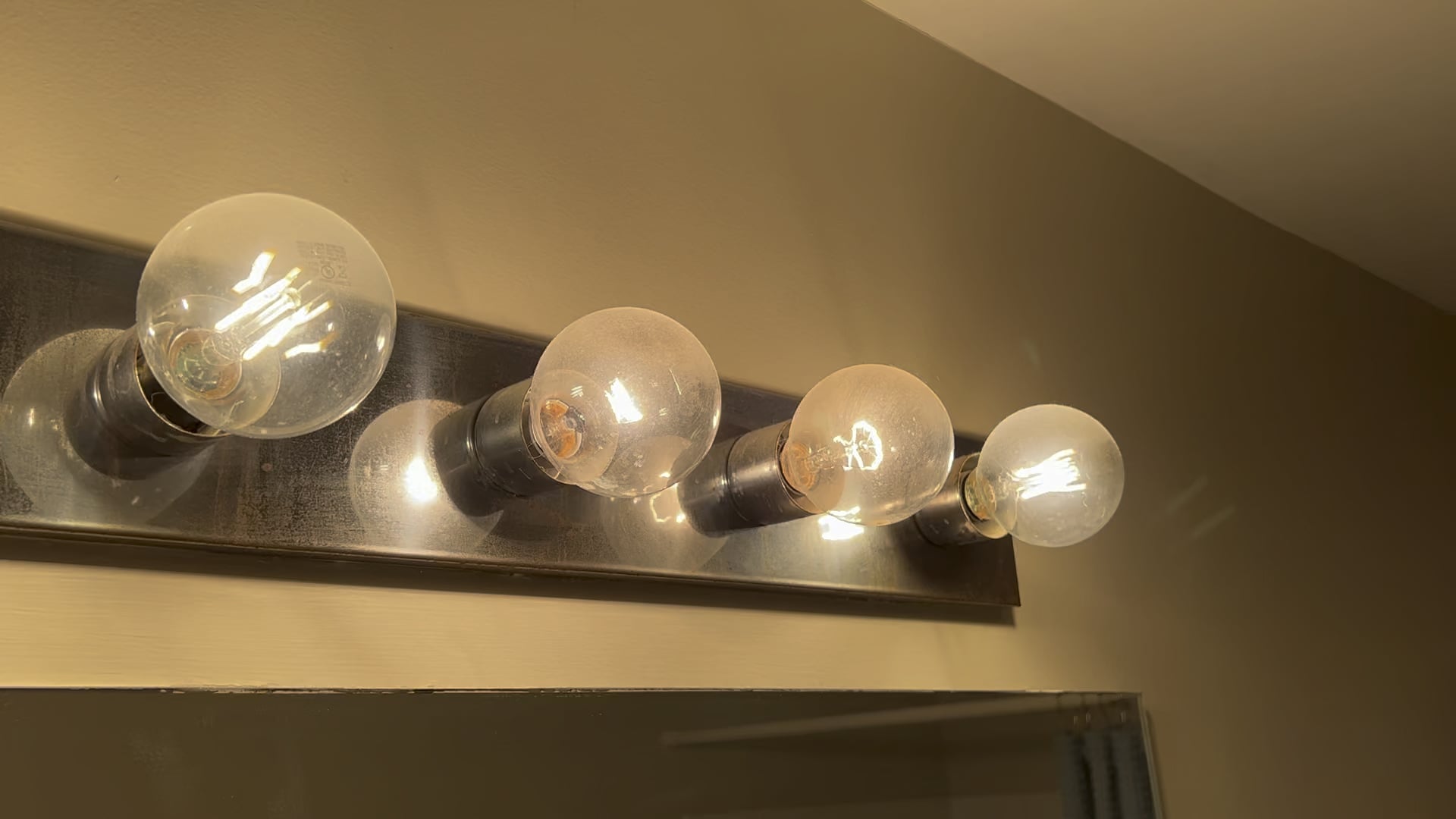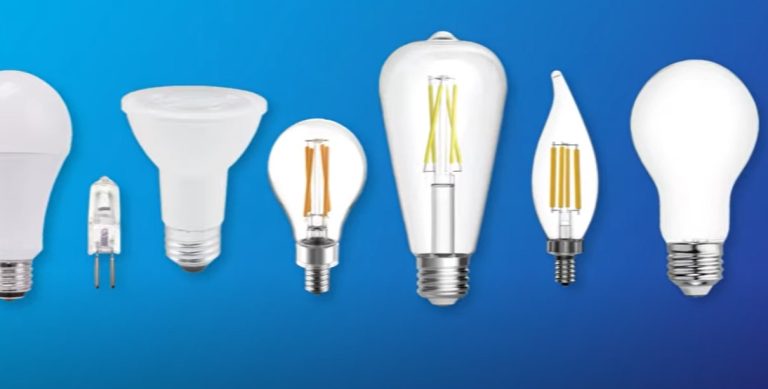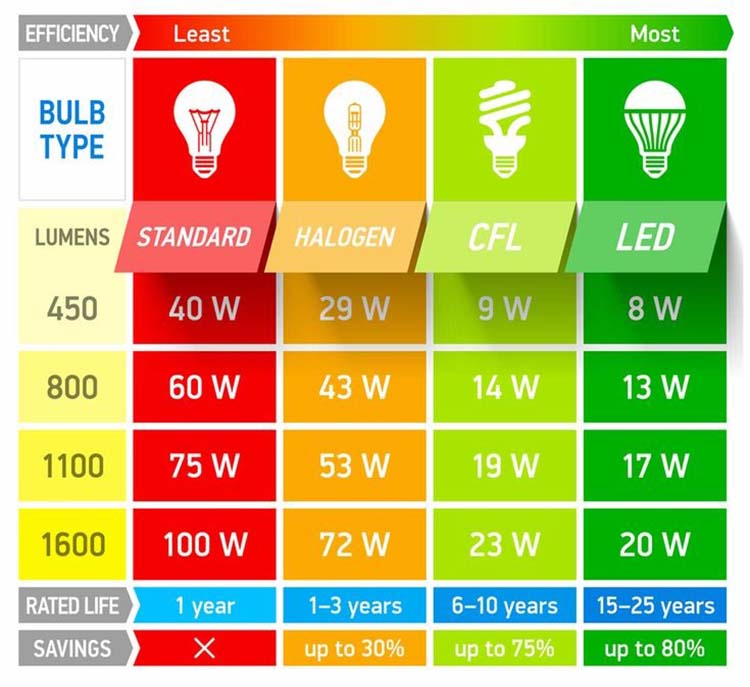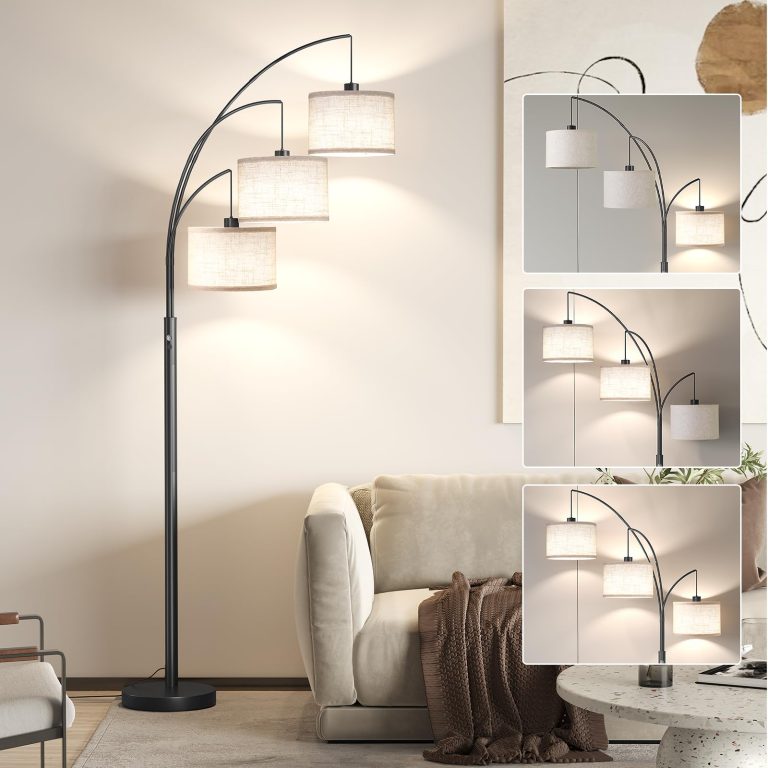Why Is My Bathroom Light Flickering? Causes & Fixes
Why is my bathroom light flickering? Your bathroom light may flicker due to a loose bulb, faulty switch, poor wiring, or a failing light fixture. It can also be caused by voltage fluctuations or moisture affecting the electrical components. Check and tighten connections or consult an electrician if the issue persists for safety.
This common issue can be both frustrating and puzzling. Imagine stepping into your bathroom for a moment of relaxation, only to be greeted by a disco light effect. It can turn any soothing bath into a stressful experience. But don’t worry—understanding why your bathroom light flickers can be surprisingly simple and might even save you from a bigger headache down the line.
Stick with us as we unravel the mystery behind your flickering light and guide you towards a flicker-free bathroom experience. Trust us, by the end of this article, you’ll be equipped with the knowledge to keep your bathroom bright and inviting.

Credit: www.lightsupplier.co.uk
Why Is My Bathroom Light Flickering?
Common Causes Of Flickering Lights
Ever walked into your bathroom only to be greeted by flickering lights? It’s not just annoying; it might be a sign of underlying issues. Understanding the common causes can save you time and frustration. Let’s dive into why your bathroom light might be throwing a mini disco party.
Loose Light Bulb
One simple cause could be a loose light bulb. If your bulb isn’t screwed in tightly, it can cause flickering. You might want to check if the bulb is secure. A quick twist could solve your problem and shed some light on the situation, quite literally.
Faulty Light Switch
Sometimes, the flicker is due to a faulty light switch. A worn-out or defective switch can interrupt the electrical flow. Have you noticed any unusual sounds when flipping the switch? It might be time to replace it for smoother operation.
Wiring Issues
Wiring issues are another culprit. They’re not as straightforward to fix but are crucial to address. Faulty wiring can lead to inconsistent power delivery. If you suspect wiring problems, it’s wise to consult a professional to ensure safety.
Overloaded Circuit
An overloaded circuit can cause lights to flicker. Is your bathroom sharing its circuit with heavy appliances? This might be causing power fluctuations. Consider redistributing electrical loads to balance the circuit.
Voltage Fluctuations
Voltage fluctuations can also lead to flickering lights. They’re often caused by external factors like nearby construction. Are the lights flickering during specific times? Monitoring the fluctuations might reveal patterns worth investigating.
Each flicker tells a story. Sometimes, it’s a simple fix; other times, it signals a deeper issue. By identifying the cause, you can decide on the best course of action. Have you discovered what’s behind your flickering lights yet?
Electrical Issues In The Bathroom
Bathroom lights flicker due to loose connections, faulty bulbs, or voltage fluctuations. Check the bulb first. If the problem persists, inspect wiring or consult an electrician to ensure safety. Regular maintenance prevents electrical issues and keeps your bathroom well-lit.
Electrical issues in the bathroom can be both frustrating and potentially hazardous. Flickering lights are a common sign that something might be wrong with your bathroom’s electrical system. Understanding these issues is crucial for maintaining a safe and comfortable home environment.
Loose Connections
Loose connections are a frequent culprit behind flickering lights. When wires are not securely connected, they can cause intermittent contact, leading to flickering. You might notice this issue if the light flickers when you touch the switch or the fixture. It’s essential to address this promptly. Loose connections can generate heat and pose a fire risk. If you’re comfortable handling basic electrical tasks, you might tighten these connections yourself. However, consulting a professional electrician ensures safety and precision.
Faulty Light Switch
A faulty light switch can also cause flickering. Worn-out switches may not maintain a constant flow of electricity to the bulb. Think about the last time you replaced your bathroom light switch. If it’s been years, it might be time for a new one. Replacing a light switch is a straightforward task, but ensuring it’s done safely is paramount.
Overloaded Circuit
Bathrooms often have multiple electrical devices running simultaneously—hairdryers, electric toothbrushes, and more. This can lead to an overloaded circuit, causing lights to flicker when additional devices are used. Consider your bathroom’s electrical load. Are you using too many high-energy devices at once? Try distributing the usage across different circuits in your home. If flickering persists, an electrician can evaluate and upgrade your circuit to handle more load safely.
Old Wiring
Older homes might have outdated electrical wiring, which can lead to flickering lights. Aging wires can degrade over time, losing their ability to effectively conduct electricity. Have you ever checked the age of your home’s wiring? If your home is over a few decades old, it might be time for an inspection. Investing in updated wiring enhances safety and efficiency in your bathroom’s electrical system.
Dampness And Humidity
Bathrooms are naturally humid environments, and moisture can affect electrical components. Dampness can cause corrosion or short circuits, leading to flickering lights. Do you have proper ventilation in your bathroom? Using a fan or opening windows can reduce humidity and protect your electrical system. Ensuring your fixtures and switches are moisture-resistant adds an extra layer of protection. Tackling electrical issues in the bathroom doesn’t have to be daunting. With a keen eye and a proactive approach, you can ensure your bathroom remains a bright and safe haven. Have you experienced any of these issues? What steps have you taken to resolve them? Share your thoughts below!
Faulty Light Fixtures
When your bathroom light starts flickering, it can be more than just an annoyance. One common culprit is faulty light fixtures. These fixtures can cause inconsistent electrical contact, leading to that frustrating flicker. Identifying and addressing the issue promptly can save you from further headaches and potential hazards.
Loose Connections
Loose connections in the fixture can disrupt the flow of electricity. When wires or screws aren’t tightly secured, the intermittent contact results in flickering lights. Have you ever tightened a screw only to find the flickering stops? That’s because even minor adjustments can make a big difference.
Damaged Wiring
Damaged wiring within the fixture can also be a cause. Over time, wires can fray or become brittle, affecting their ability to transmit electricity smoothly. Do you notice any burnt smells or visible damage? These are signs that you may need to replace the wiring to restore stability to your lighting.
Old Fixtures
Old fixtures might be nearing the end of their lifespan. As components wear out, they can cause flickering. Have you considered the age of your bathroom light fixtures? Sometimes, simply upgrading to newer models can resolve the problem and enhance your bathroom’s ambiance.
Poor Quality Fixtures
Inexpensive fixtures often come with poor build quality. These can develop issues more quickly than higher-quality options. Have you ever bought a cheap fixture only to regret it later? Investing in a reputable brand can ensure longevity and reliable performance, reducing the risk of flickering.
Improper Installation
Improper installation can lead to flickering lights. If the fixture was installed incorrectly, it might not be receiving a stable electrical connection. Do you recall installing the fixture yourself or using someone inexperienced? A professional installation can prevent this issue and give you peace of mind.
Addressing faulty light fixtures involves understanding the underlying cause. By identifying whether the issue is a loose connection, damaged wiring, old age, poor quality, or improper installation, you can take actionable steps. Have you checked your fixtures recently? It might be time to give them a closer look.
Credit: www.reddit.com
Impact Of Environmental Factors
Humidity and temperature changes can cause your bathroom light to flicker. Moisture affects electrical connections, leading to this issue. Regular checks can help ensure safety and functionality.
Flickering bathroom lights can be frustrating, especially when you’re trying to relax in a warm bath or get ready for a night out. While electrical issues might be the first thing that comes to mind, environmental factors can also play a significant role. Understanding how these factors impact your lighting can help you address the problem effectively.
Humidity Levels
Bathrooms are naturally humid environments, and moisture can seep into light fixtures. This can cause connections to become loose, leading to flickering. Consider using a dehumidifier or keeping the bathroom well-ventilated to reduce moisture levels.
Temperature Fluctuations
Extreme temperature changes can affect light fixtures. If your bathroom experiences drastic shifts from hot to cold, it might cause the materials around the light to expand and contract. This movement can loosen electrical connections over time, resulting in flickering lights.
Corrosion
Excess moisture in bathrooms can lead to corrosion in light fixtures and wiring. Corroded components may struggle to maintain a steady electrical connection, causing flickering. Regularly inspect and clean your fixtures to prevent corrosion from becoming an issue.
Dust And Dirt Accumulation
Dust and dirt can accumulate on light bulbs and fixtures, which may affect their performance. While this might not seem like a direct cause of flickering, dirty fixtures can overheat or interfere with electrical connections. Make it a habit to clean your light fixtures regularly to ensure optimal performance.
Vibration From Household Activities
Activities such as slamming doors or heavy foot traffic can cause vibrations that affect the stability of light fixtures. If your bathroom light is near a frequently used area, this might be the culprit. Check to make sure that your light fixtures are securely fastened to prevent flickering. Do you notice your bathroom light flickering only at certain times of the day? Or perhaps it’s more common during specific weather conditions? Paying attention to these details can provide valuable clues. By understanding the environmental factors at play, you can take practical steps to solve the problem and enjoy a flicker-free bathroom experience.
Effective Solutions For Flickering Lights
Flickering bathroom lights can be annoying. They disrupt relaxation and routine. Addressing this issue promptly prevents larger problems. There are several effective solutions. Each targets a different cause. Here’s how to tackle flickering lights efficiently.
Check The Bulbs
Start with the simplest fix. Check if the bulbs are loose. Tightening them might solve the problem. If the flickering continues, replace the bulbs. Use the correct wattage for your fixture. LED bulbs are a reliable choice. They are energy-efficient and long-lasting.
Inspect The Light Switch
A faulty switch can cause flickering. Turn off the power to your bathroom. Remove the switch cover and inspect the wires. Look for loose connections or damaged wires. Tighten or replace them as needed. If unsure, consult a professional electrician.
Examine The Circuit Breaker
The circuit breaker might be overloaded. This can lead to flickering lights. Locate your home’s circuit breaker panel. Check if the bathroom circuit is tripped. Reset it if necessary. Consider redistributing electrical loads. This prevents future overloads.
Evaluate Electrical Connections
Loose electrical connections cause flickering. Turn off the power supply. Remove the light fixture from the ceiling or wall. Check all wiring connections. Tighten any loose wires. Ensure the connections are secure. This may require professional help.
Identify Voltage Fluctuations
Voltage issues can affect light stability. If other lights flicker, the problem might be broader. Contact your utility company. They can assess and fix voltage fluctuations. This ensures consistent electrical supply.

Credit: www.reddit.com
Frequently Asked Questions
Why Does My Bathroom Light Flicker Sometimes?
Bathroom lights flicker due to loose connections or faulty bulbs. Check the bulb first. Then the connections.
Can A Bad Light Switch Cause Flickering?
Yes, a bad light switch can cause flickering. Replace the switch if it’s worn out or faulty.
Is Flickering A Sign Of Electrical Problems?
Flickering can indicate electrical issues. Check wiring or consult an electrician if the problem persists.
Conclusion
Flickering bathroom lights can be frustrating. But don’t worry, solutions exist. Check the bulb first. Sometimes a simple replacement fixes the issue. If not, inspect the switch and wiring. Loose connections often cause flickering. Still flickering? Consider consulting an electrician.
Safety matters, so professional help is best for wiring issues. Remember, regular maintenance prevents problems. Keep your bathroom bright and safe. A little attention goes a long way. Stay proactive, and enjoy a flicker-free bathroom light.
Related Article

